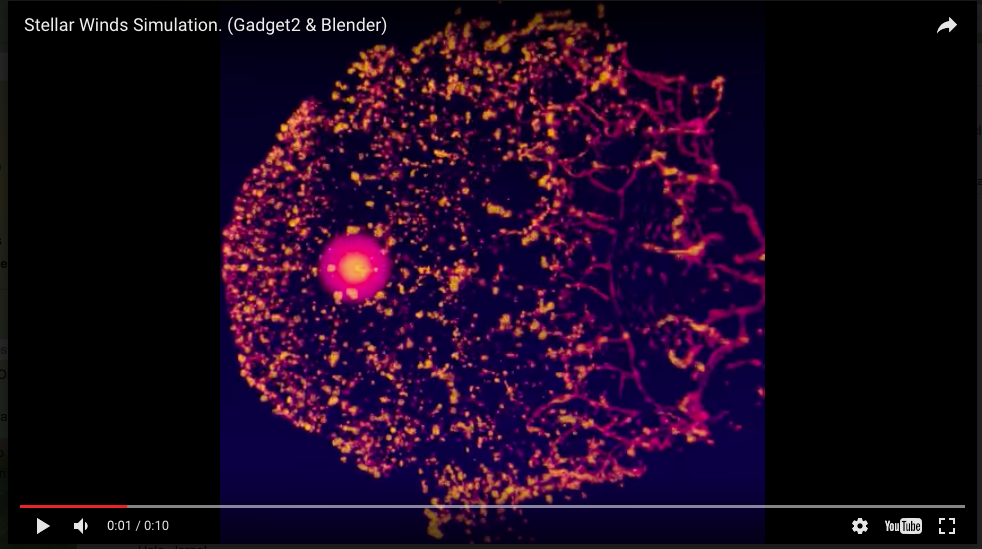UC Master student publishes invited paper on visualization of simulations
 Matías Gárate, student at the Institute of Astrophysics and part of the Núcleo Milenio on Protoplanetary Disks, developed a methodology to use the data of simulations in an animation software to generate material for scientific visualization and outreach.
Matías Gárate, student at the Institute of Astrophysics and part of the Núcleo Milenio on Protoplanetary Disks, developed a methodology to use the data of simulations in an animation software to generate material for scientific visualization and outreach.
The challenge was to make that thousands of data generated in the simulations carried out by the Núcleo Milenio on Protoplanetary Disks, led by the astronomer Simon Casassus, could become attractive audiovisual material to present to the public during outreach talks.
And who solve it was Matías Gárate, student of the UC Master in Astrophysics, who checked some tutorials of a 3D animation software and managed to transform the data from simulations — by Sebastián Pérez and Jorge Cuadra, academic of the Institute of Astrophysics UC, and Matías' advisor — in demonstrative videos that show, for example, the structure and evolution of stellar winds and protoplanetary disks.
"I happened to know how to use Blender, a software that is used by graphic artists to make videos or animations. I followed some online tutorials and said 'I'll try'. I did a couple of experiments and discovered that it was possible, but no one had used it with hydrodynamical simulations", explains the student, who using visualization techniques presents the data in an attractive way, "I was telling the software the regions with more density and putting colors according to how matter accumulates".
 His work did not go unnoticed and was recognized with the invitation to publish an article in the journal Publications of the Astrophysical Society of the Pacific, that will have a special edition called Techniques and Methods for Astrophysical Data Visualization, in which Matías writes about his technique. "The article included a brief introduction to the software, the types of format that it receives, how to transform from typical formats of simulation to the input of the software, how to interpolate the data so that errors do not appear, and facilitate the work for those who wish to use it".
His work did not go unnoticed and was recognized with the invitation to publish an article in the journal Publications of the Astrophysical Society of the Pacific, that will have a special edition called Techniques and Methods for Astrophysical Data Visualization, in which Matías writes about his technique. "The article included a brief introduction to the software, the types of format that it receives, how to transform from typical formats of simulation to the input of the software, how to interpolate the data so that errors do not appear, and facilitate the work for those who wish to use it".
The value of the work, he says, is that being an animation software "once you load the data you can use all the animation techniques that exist in the program to present it: adjust the color, opacity, zoom the camera, etc."
The publication is soon to be released, while Matías keeps working on his Master thesis on protoplanetary disks, and preparing his applications to study a doctorate abroad.






